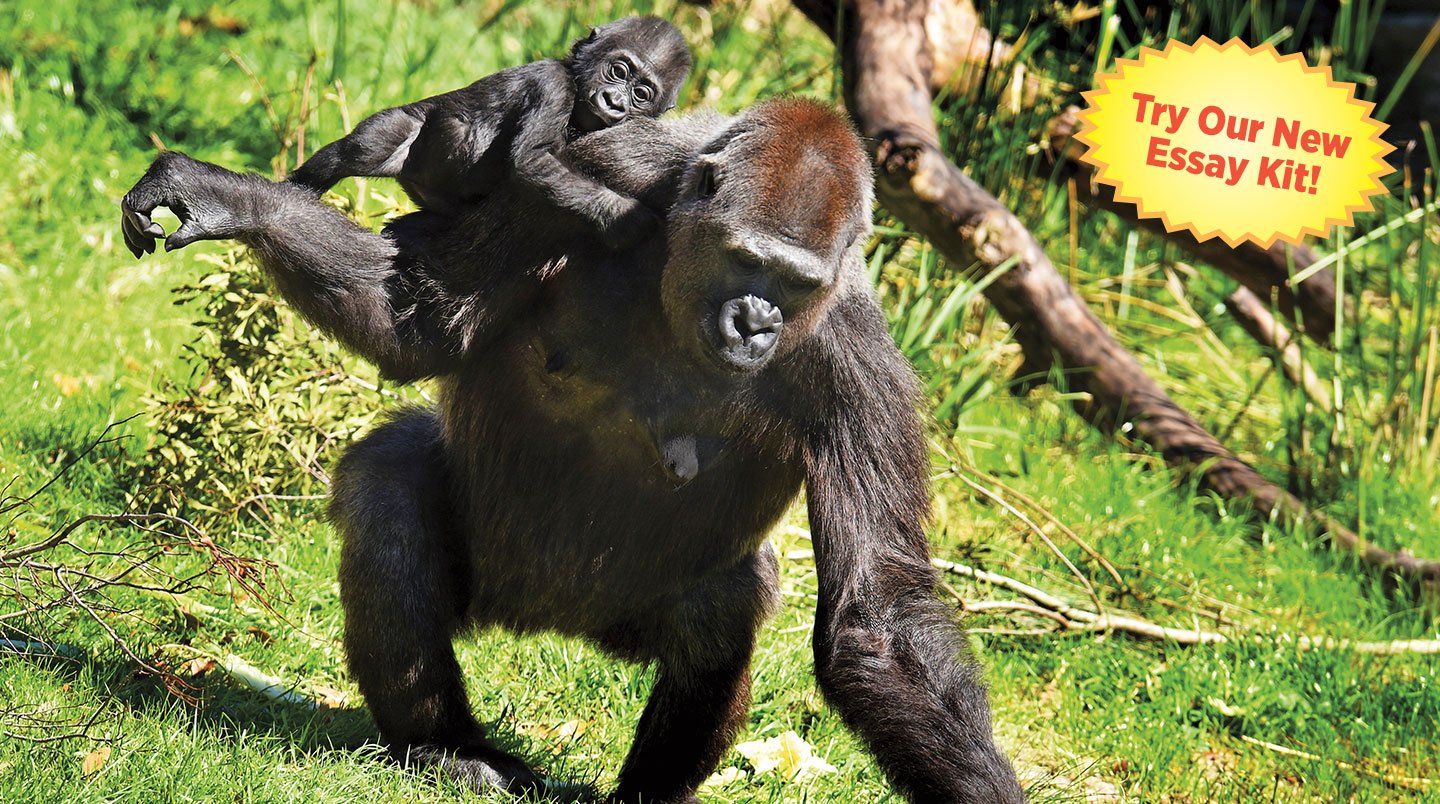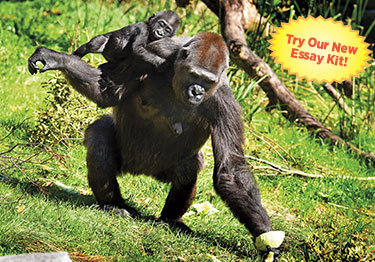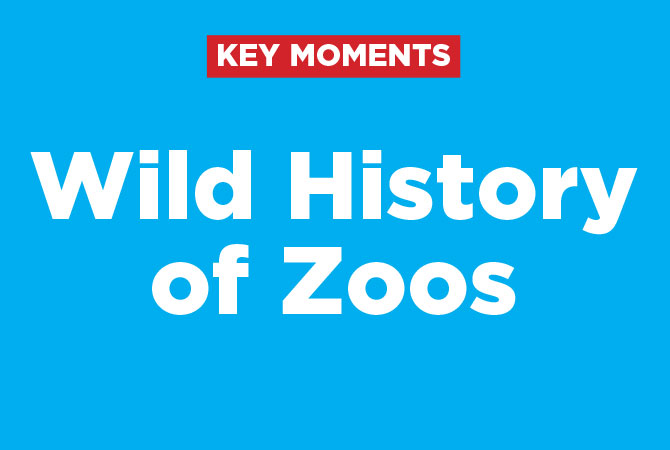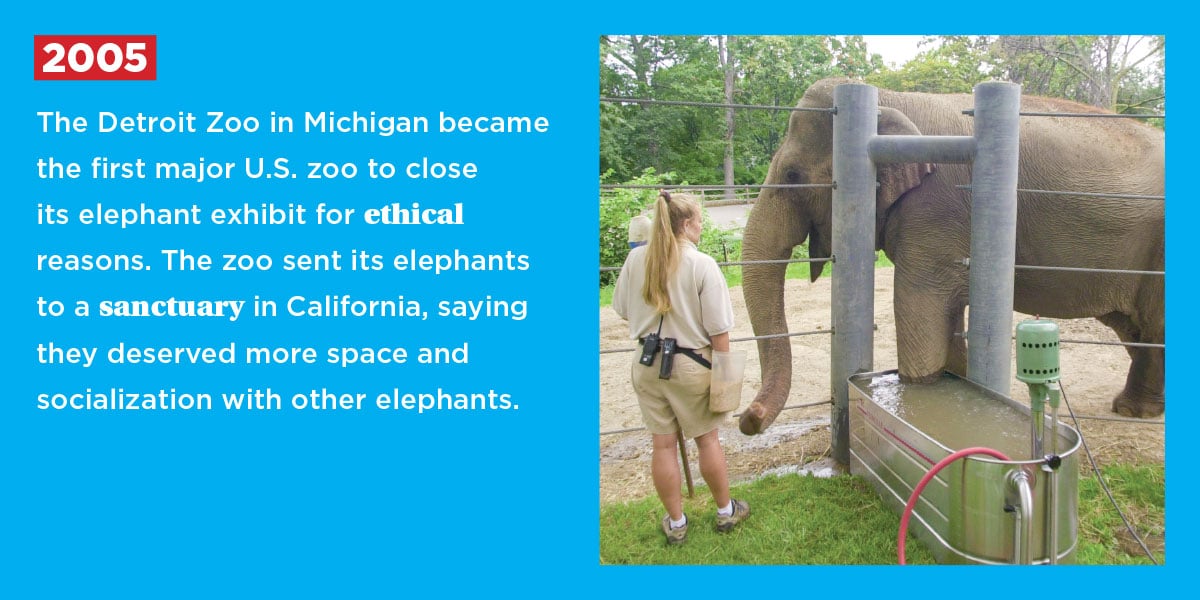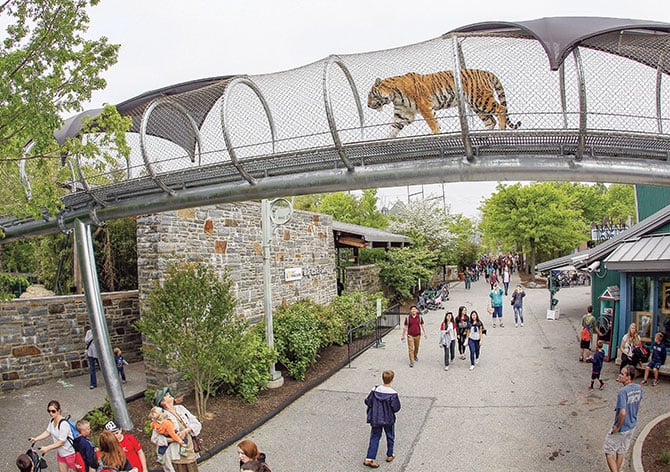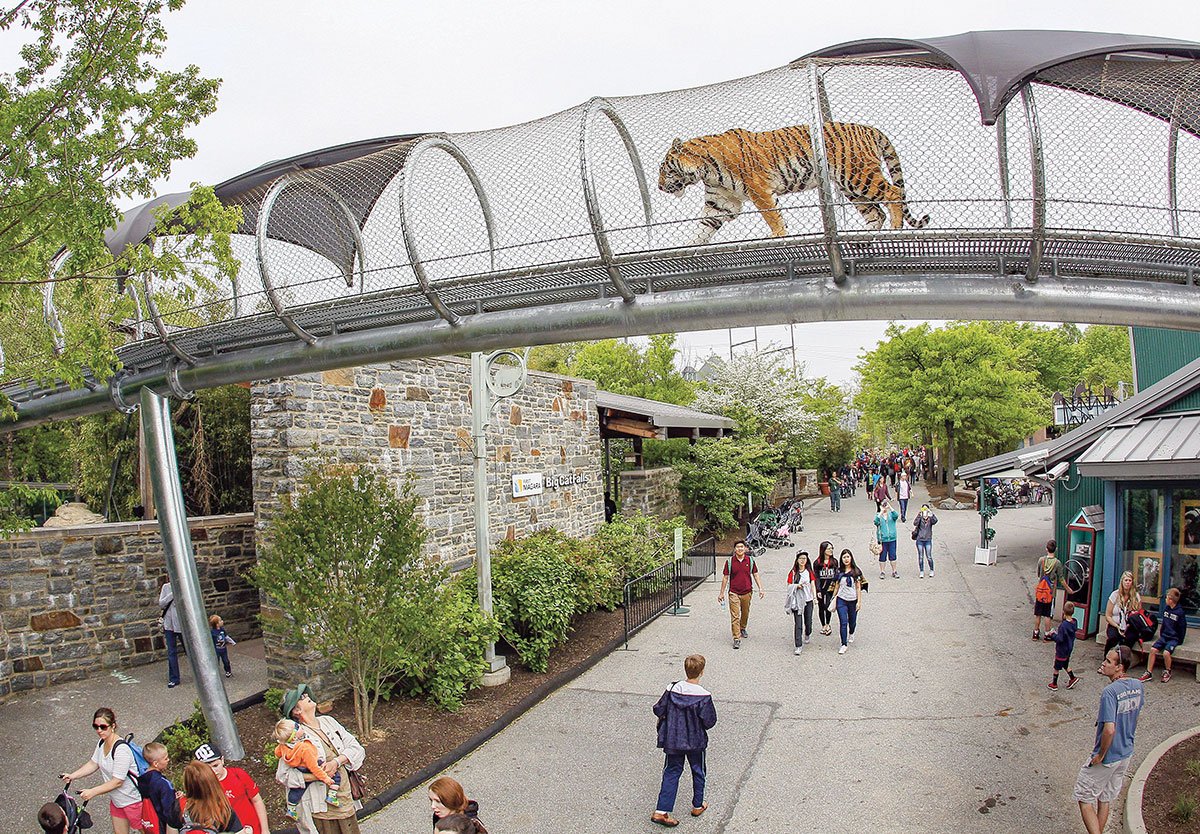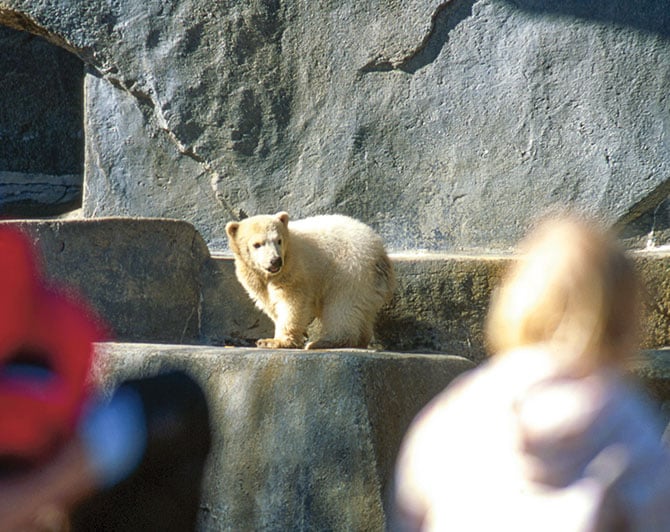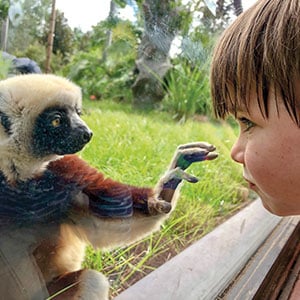
Courtesy of Jacksonville Zoo
A visitor greets one of the zoo’s lemurs.
Young gorillas wrestle together playfully. Monkeys scale a 50-foot tree. Bonobos shriek and swing on vines. Around them, massive rock formations, tropical plants, and long grasses fill the landscape.
The animals are
Every year, nearly 1 million people visit the zoo to watch the apes and monkeys run overhead through tunnels, to film them climbing, and even to touch hands with them—through the glass.
The primates’ expansive enclosure is a far cry from the metal cages that were once standard in zoos, and that’s no accident. Zoos used to be almost entirely focused on entertaining humans. But destruction of habitats, illegal hunting, and research about how captivity affects animals’ well-being have prompted zoos to embrace

